Small AMR: The Smart Way to Automate Tight Spaces
In the manufacturing sector, Small AMR (Autonomous Mobile Robots) are rapidly gaining popularity. It’s not just because they’re small—it’s because they deliver the functionality and efficiency that smart factories demand.
As labor costs rise, the workforce ages, and efficiency becomes more critical than ever, many companies are turning to small AMR to build flexible and scalable automation systems.
[Quick Preview]
🌟 Why Are Small AMR a Popular Choice for Smart Factory Implementation? — Top 3 Reasons 🌟
1. No need to change your layout—automate existing workflows as they are.
2. Low upfront cost with fast return on investment.
3. Small in size, but packed with full smart capabilities.
📌 The Rise of Smart Factories: Why AMRs Are Trending Now
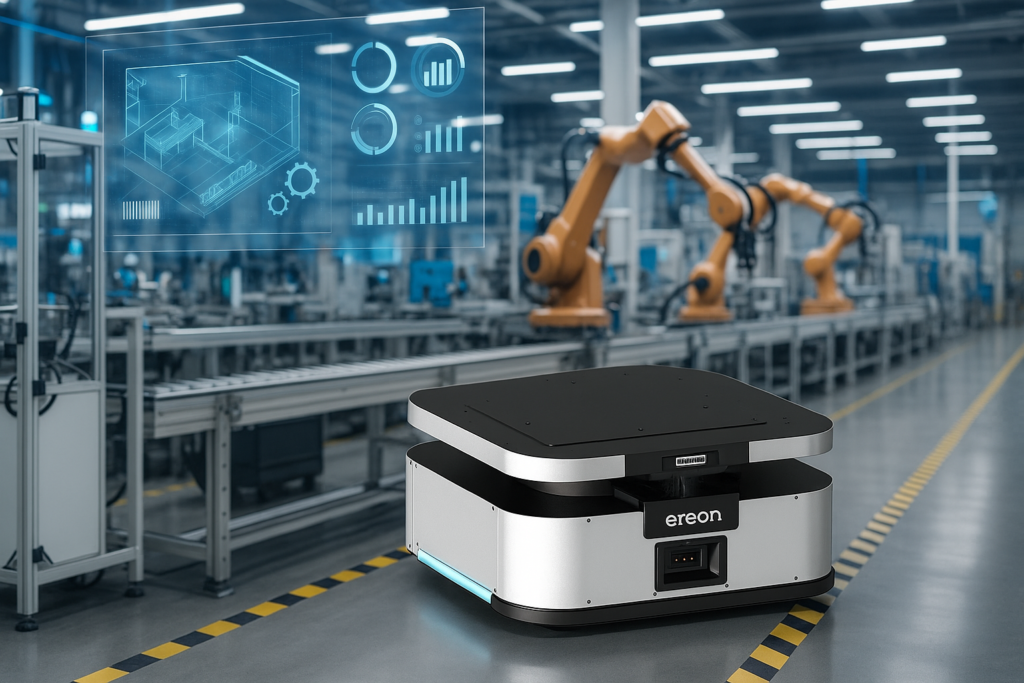
In the past, manufacturing plants relied on large conveyor belts, fixed production sequences, and rigid worker movement. But with digital transformation accelerating, manufacturers now need to be more flexible and adapt quickly to change. Smart factories depend on several core technologies. These include data-driven decision-making, the Internet of Things (IoT), AI-powered quality control, and above all, autonomous logistics systems. Among them, AMRs play a key role. They identify and transport materials, replacing manual handling and improving efficiency between processes.
Small AMR are especially effective in small to mid-sized factories and high-mix, low-volume production lines. They can be deployed quickly without reconfiguring equipment and can navigate tight spaces with ease. In this article, we’ll explore why more manufacturers are turning to compact AMRs—and what makes them the right choice.
📌 3 Reasons Manufacturers Choose Small AMR for Smart Factory Implementation
1️⃣ Automate Existing Workflows Without Changing Your Layout
Many production sites were not originally designed with automation in mind. As a result, equipment is often tightly spaced, leaving only narrow aisles where a single person can pass through. Introducing large AMRs in this environment usually requires moving machines or significantly changing the layout. This leads to higher costs and longer downtime. It can also reduce the number of machines you can install, which lowers productivity—exactly the opposite of what automation is meant to achieve.
Small AMR can be introduced without shutting down your operations. They can be deployed directly on-site without changing existing equipment or stopping production lines. This helps minimize productivity loss during the transition to automation. That’s a major advantage in manufacturing environments where continuous production is essential. It also reduces the burden of redesigning your layout for automation. You can keep your current setup and still achieve process automation—making small AMR a smart and practical choice.
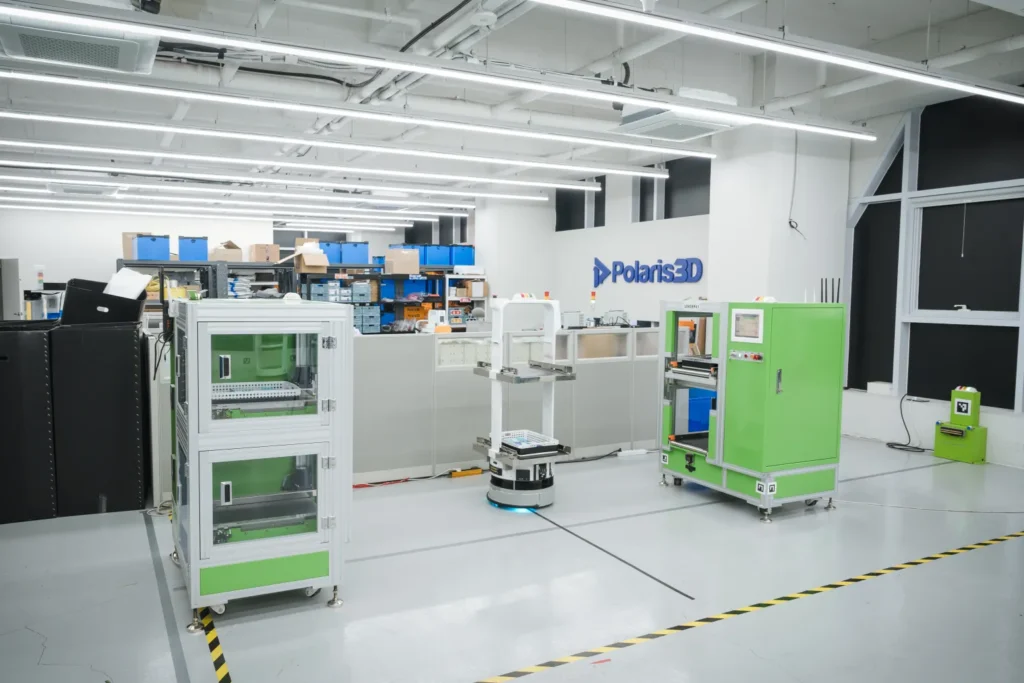
2️⃣ Lower Upfront Cost, Faster ROI
One of the biggest reasons companies hesitate to automate is the high initial investment. Large AMRs or AGV systems often require not only expensive hardware, but also additional infrastructure and ongoing maintenance. These costs can add up quickly.
In contrast, small AMR are more affordable. Their smaller size and simpler installation keep upfront costs low, and maintenance is easier and less costly. Since they can be deployed without modifying existing equipment, they also help reduce extra implementation costs. In many real-world use cases, manufacturers see a return on investment within 12 to 18 months. This is due to increased productivity, reduced labor costs, and improved logistics efficiency. (Of course, actual ROI vary depending on your operation and the model you choose.)

3️⃣ Small in Size, Big on Capabilities (Small AMR)
Today’s small AMR are not just smaller—they’re also highly advanced in terms of technology. They come equipped with features like SLAM-based autonomous navigation, real-time path tracking, obstacle avoidance, and multi-AMR communication and control. These are capabilities typically found in much larger AMRs.
Thanks to these features, small AMR perform reliably even in complex warehouse layouts or dynamic production environments. They can also be integrated into existing processes and systems with minimal changes, allowing fast and flexible automation. Though small in size, they deliver full-scale functionality—making them a practical and future-ready solution for the smart factory era.
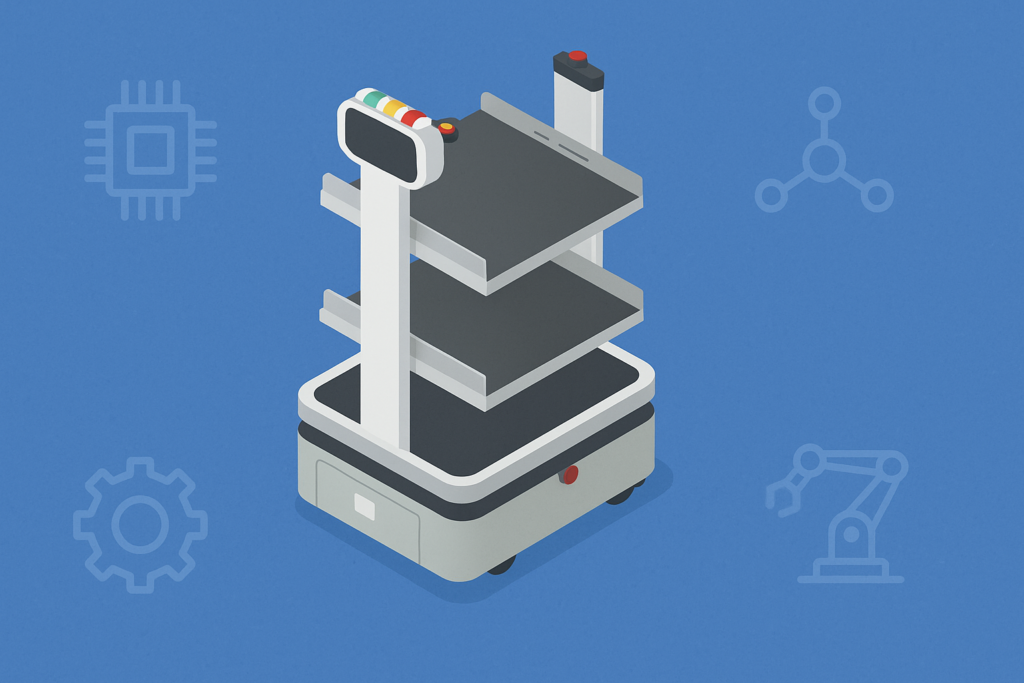
These combined factors are why many manufacturers today are turning to small AMR as a starting point for automation. Small AMR can be deployed without space constraints. They’re cost-effective and come equipped with smart features. For companies planning a smart factory transition, they offer a highly practical and realistic solution.
📌 Conveyor-Type AMR: Another Compact Solution from Polaris3D
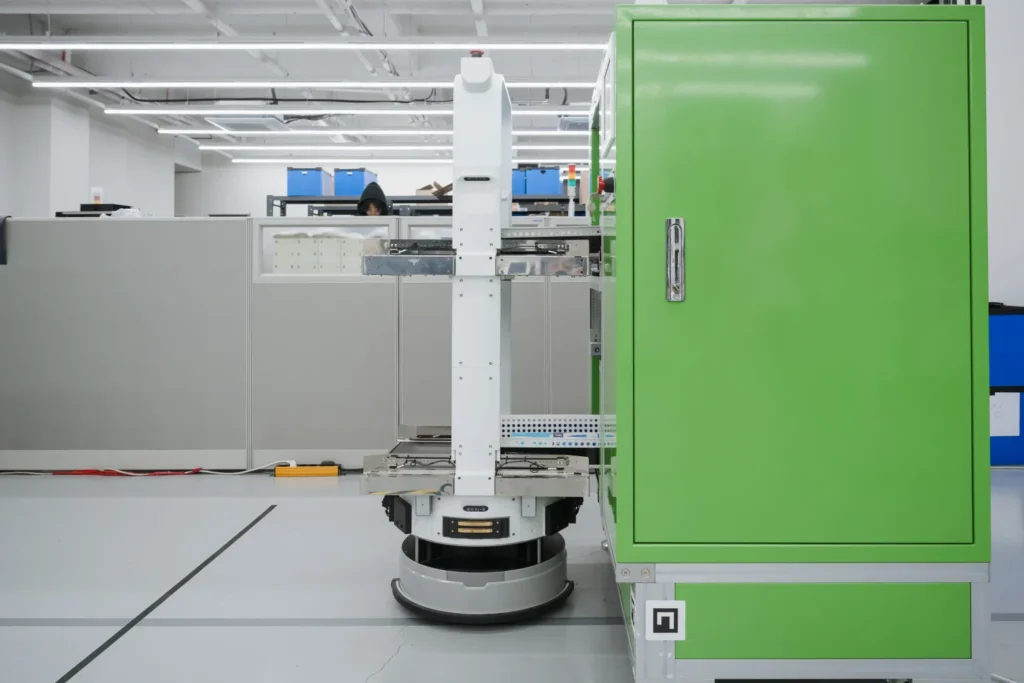
In response to growing market demand, Polaris3D has introduced a new conveyor-type small AMR. This model does more than just move materials. It comes with a built-in conveyor system that can automatically pick up and deliver items. One of its key strengths is its ability to support automated workflows that connect to fixed equipment. It enables precise docking and smooth integration between conveyors. As a result, it can transfer materials reliably—even without direct contact. This makes the system highly flexible. It can adapt to various production environments without requiring additional loading equipment.
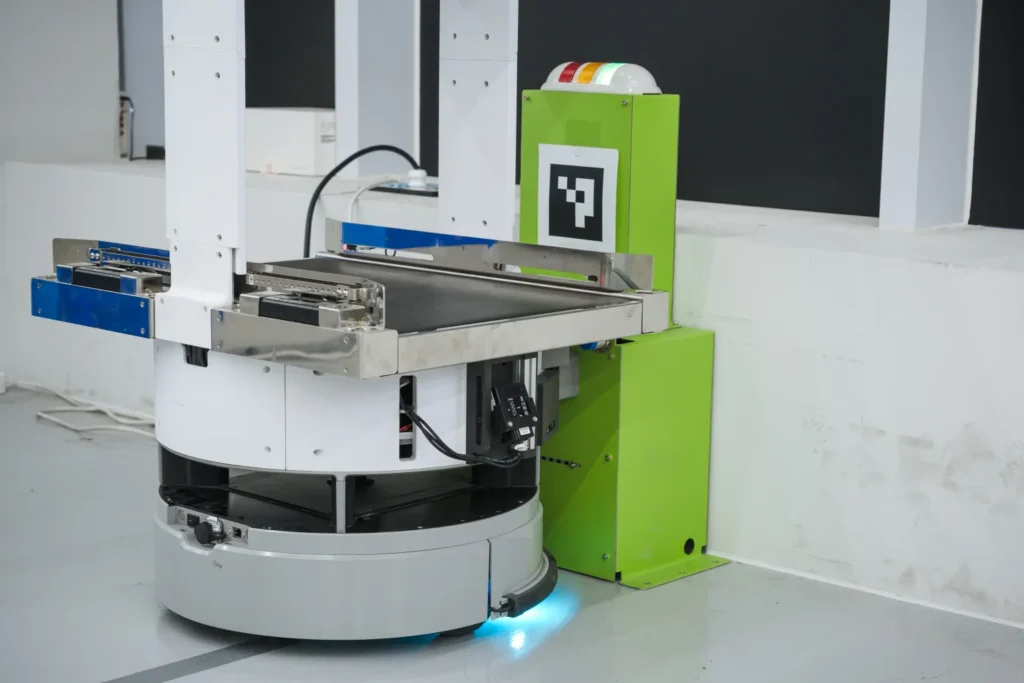
Key Features of the Small AMR:
- Built-in conveyor enables automatic loading and unloading of materials.
- PIO sensor allows precise, non-contact docking with production equipment.
- SLAM-based autonomous driving supports accurate path planning and obstacle avoidance.
- Multi-AMR coordination improves efficiency when operating multiple units simultaneously.
- Integration with Nepler enables remote control and real-time system monitoring through a centralized platform.
Polaris3D’s conveyor-type small AMR (CRM) is more than just a transport device. It is becoming a core infrastructure for logistics automation. The CRM delivers high efficiency and performance across various manufacturing environments. It performs especially well in settings that require automated material transfer between processes. It’s also ideal for operations with repetitive loading and unloading tasks, or for unattended night shifts.
📌 Summary: Small in Size, Powerful in Performance
- As smart factory adoption accelerates, demand for flexible logistics automation is rising—driving increased interest in small AMR.
- They offer clear advantages in several key areas. They work well in tight spaces, cost less to implement, and can operate safely alongside human workers. They also come with advanced built-in technologies.
- Polaris3D’s SMAR Conveyor-Type AMR is also tailored to meet this industry shift, offering a compact solution that takes on-site efficiency to the next level.
| ✅ Small AMR Adoption Checklist |
|---|
| ☐ Frequent material transfers between processes |
| ☐ Limited space between machines or workstations |
| ☐ Concerned about high upfront investment costs |
| ☐ Need to maintain or improve current productivity |
| ☐ Planning to implement a smart factory in the near future |
Now is the perfect time to bring small AMR into your operation and take the next step in process automation.










